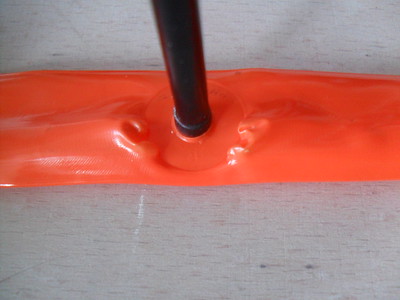jim haseltine
Senior Retro Guru
Last summer I tried some TPU 'Race Formula' brand tubes - made in China by an anonymous company. As I (knock on wood) usually don't puncture much I thought I'd take a chance. The following are extracts from something I wrote elsewhere about them.
Fitting:
Add a bit of air to round out the tube and you get something that looks and feels a lot like those plastic air sacks that are used for packing fragile objects. The TPU is so slippery that it's not easy to get the tube inside the tyre as each time you get part in place a bit further around the rim decides to pop out.
I replaced the one spare butyl tube that I normally carry with two TPUs and there was still enough space in my tool kit for at least one more and not only that but the bike (and kit) were some 300 grams lighter than it was.
300 grams might not be much but the bike was down to 9.9kg - at my age, weight and lack of fitness I need every marginal gain I can get.
First impressions:
Noisy. Lots of road noise, like a deep rumble. Took about 10 miles before I managed to ignore it.
Bike felt surprisingly lively, rolling resistance seemed to have dropped considerably and the overall ride seemed smoother than previously - especially across some roads that are in pretty awful condition.
Next time I went for the bike - a flat tyre.
Right - tube out, let's have a look.
Immediate concern was visible stretching/distortion of the tube close to the valve seat.



I checked the rear tube, similar distortion.
And where did the air go? It leaked out of a bad seal between the valve seat and the valve stem.

Fitted two new TPU tubes.
Couple of rides later I had a rapid loss of pressure from the rear tyre - not a blow out but it went down in maybe 10 seconds, fault appeared to be a perforation at similar distortion near the valve.
Fitted another TPU tube.
Moved the bike a couple of days later to find a flat rear tyre and lying on the floor was this

The thought crossed my mind that it could have happened on the road - like in a fast bend or on a descent.
I went back to butyl but have recently taken another risk and fitted some of those pink RideNow tubes to my summer bike following some advice from another rider as to fitting technique (which just happens to be almost word-for-word the fitting advice on the RideNow instruction leaflet). If they give me the same issues I'll go back to butyl permanently.
Fitting:
Add a bit of air to round out the tube and you get something that looks and feels a lot like those plastic air sacks that are used for packing fragile objects. The TPU is so slippery that it's not easy to get the tube inside the tyre as each time you get part in place a bit further around the rim decides to pop out.
I replaced the one spare butyl tube that I normally carry with two TPUs and there was still enough space in my tool kit for at least one more and not only that but the bike (and kit) were some 300 grams lighter than it was.
300 grams might not be much but the bike was down to 9.9kg - at my age, weight and lack of fitness I need every marginal gain I can get.
First impressions:
Noisy. Lots of road noise, like a deep rumble. Took about 10 miles before I managed to ignore it.
Bike felt surprisingly lively, rolling resistance seemed to have dropped considerably and the overall ride seemed smoother than previously - especially across some roads that are in pretty awful condition.
Next time I went for the bike - a flat tyre.
Right - tube out, let's have a look.
Immediate concern was visible stretching/distortion of the tube close to the valve seat.



I checked the rear tube, similar distortion.
And where did the air go? It leaked out of a bad seal between the valve seat and the valve stem.

Fitted two new TPU tubes.
Couple of rides later I had a rapid loss of pressure from the rear tyre - not a blow out but it went down in maybe 10 seconds, fault appeared to be a perforation at similar distortion near the valve.
Fitted another TPU tube.
Moved the bike a couple of days later to find a flat rear tyre and lying on the floor was this

The thought crossed my mind that it could have happened on the road - like in a fast bend or on a descent.
I went back to butyl but have recently taken another risk and fitted some of those pink RideNow tubes to my summer bike following some advice from another rider as to fitting technique (which just happens to be almost word-for-word the fitting advice on the RideNow instruction leaflet). If they give me the same issues I'll go back to butyl permanently.
Last edited: